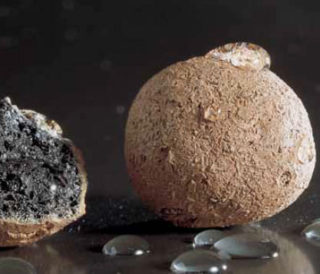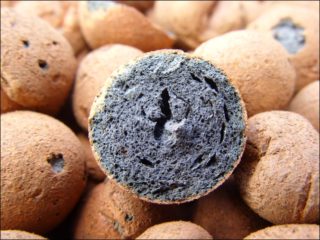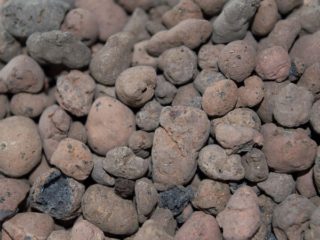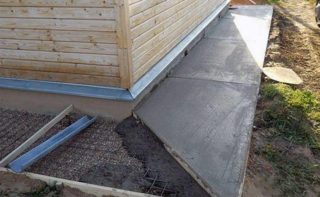Materials having isolated voids in the structure protect the surface well from the cold. The thermal conductivity of expanded clay depends on the grain size and density. The insulation weighs a little, isolates from sounds, but is hygroscopic. The material requires additional insulation from moisture in order to qualitatively protect the building from heat loss.
Thermal Conductivity Description
The ability of a heater to transfer energy from heated layers to parts with a lower temperature is called thermal conductivity. The process is ensured by the chaotic movement of molecular particles, its intensity depends on humidity, density, pore size.
The physical process of heat conduction is accelerated with a large temperature difference outside and inside the building. Spontaneous energy transfer always proceeds from a hotter medium in the direction of the cold environment and occurs before the appearance of thermodynamic equilibrium.
Coefficient of thermal conductivity
To quantify the ability of a material to transfer energy, there is a coefficient of thermal conductivity. The indicator indicates the amount of heat flowing through the sample of the material under given conditions. The test standard always has the same dimensions in length, width and area and is checked at a standard temperature difference (1 K). The heat transfer coefficient is measured in W / m · K, which corresponds to the International System of Units.
The name of the coefficient of thermal resistance is used in the construction field. The thermal conductivity of expanded clay is 0.1 - 0.18 W / m · K. Qualitative material is characterized by a numerical index of 0.12 - 0.17 W / m · K, a heater with such properties retains up to 80% of internal heat.
Factors affecting the value of thermal conductivity
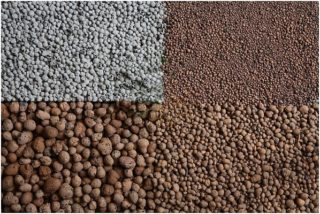
Expanded clay is used in construction as a porous bulk insulation or as a filler in the production of lightweight concrete. Granules are obtained by burning clay shale or clay and have an oval, round shape, sometimes with sharp corners. Building material is made in the form of sand.
The bulk density of expanded clay is in the range of 150 - 800 kg / m3, the bulk density depends on the technological mode upon receipt. The ability to conduct heat depends on the size of the granules, the porosity of the material and its moisture.
Expanded clay fraction
When comparing the characteristics, we conclude that the thermal conductivity decreases with increasing granule size. Medium and coarse gravel is best used to insulate unloaded roofs and ceilings from wood. Fine-grained expanded clay is used for lightweight floor screed.
Expanded clay fractions are established in accordance with the standards of GOST 9757 - 90:
- From 5 to 10 millimeters, a small group is determined. The material is used for the production of wall blocks made of expanded clay concrete. The filler of small granules is used in concrete screed coatings or floors, because large parts increase the thickness of the layer.
- From 10 to 20 mm is the middle fraction. The material in the bulk is well insulated from cold floors, attics, used for warming lawn areas and drainage of the earth. The fraction is rarely used in screeds and concrete floors; it is added to the solution if the layer thickness does not matter.
- From 20 to 40 mm - large granules. They insulate heating mains, basements, floors of utility rooms, make the building insulation from noise.
The layers of bulk insulation effectively protect from the cold, if 2-3 fractions are used simultaneously. So the voids are filled, stiffness increases, convection of flows is prevented.
Porosity
The raw material is placed in drums, where it rotates and is simultaneously heated to high temperatures. Under such conditions, the material swells, and porous granules are obtained, which are protected on the outside by a baked clay crust. Most voids are enclosed; the partitions between them also contain voids.
The pore size is regulated by the introduction of citrogypsum and mineral impurities into the mixture during production. The additive in an amount of 1 to 3% forms closed voids up to 1 mm in size. An increase in the additive volume to 4–9% leads to the expansion of pores to 1.5–2 mm, while the number of closed cavities increases. The number of isolated voids increases the heat-shielding properties and reduces the absorption of water.
Humidity
Expanded clay water absorption varies between 8 - 20%. When moisture enters the material, the surfaces of the granules are moistened, which slowly absorb the liquid. Gradually, water enters the spheres through microscopic cracks and is retained inside. Expanded clay accumulates moisture and gives it hard. The mass increases, the characteristics of the thermal conductivity of expanded clay change, the strength decreases.
Dry expanded clay withstands up to 25 episodes of freezing and thawing, wet is destroyed by expansion of water at low temperatures. Expanded clay is protected by hydro and vapor barrier films from moisture.
Types of expanded clay depending on the size of the granules
Bulk insulation is classified by the size of the granules and their shape.
Expanded clay varieties are distinguished:
- gravel;
- crushed stone;
- sand.
Coarse-grained material adds height to the room, usually a heat-insulating effect is achieved when the thickness of the bedding is from 20 to 30 cm. To reduce the size of the layer, expanded clay can be combined with mineral wool, polystyrene foam, polystyrene foam.
The material can be compared by grade for strength. There are 13 varieties of gravel and 11 samples of expanded clay gravel. The tensile strength of one brand is different, for example, crushed stone P100 is destroyed at 1.2–1.6 MPa, and gravel of a similar grade is deformed at 2–2.5 MPa.
Gravel
The material consists of rounded particles with a crust of molten clay, which inside contain voids. Gravel fractions are distinguished: 5–10, 10–20 and 20–40 mm. Depending on the density, 10 grades of insulation from M150 to M800 are presented in bulk. By special order, gravels M900 and M1000 are produced.
Gravel concrete filled with medium and small granules is lightweight, does not burden structures and exhibits improved thermal insulation properties. Expanded clay wall blocks are used in low-rise buildings, they protect the building from cold air, have good air permeability and belong to environmentally friendly categories.
Crushed stone
Expanded clay of this type contains individual elements of irregular angular shape with sharp edges and faces. The size of the fractions is determined similarly to gravel. Due to its shape, the material has a low bulk density and is used for insulation of attics, basements. Foundations and bases are isolated with expanded clay from freezing. In the ground, waterproofing with foil material, polyethylene, roofing material is arranged, protection against domestic and atmospheric vapors is mounted on top.
The coefficient of thermal conductivity of expanded clay depends on the size of the rubble, but with increasing size, the thickness of the required layer increases. A cement-sand screed (not less than 4 cm) is performed on top of the bedding to increase strength.
Sand
Expanded clay, containing fine particles up to 5 mm in its composition, belongs to this category. The material is obtained by firing residues from the production of crushed stone or gravel or by grinding large pieces. Sand is used for insulation indoors together with large species or used in screed floors.
Bulk insulation is more effective than small granules in a cement-sand mixture. Moisture from the solution is absorbed by the granules, and they lose their protective properties. A comparative analysis of wall blocks of expanded clay sand and gravel shows that the former conduct heat faster, but are characterized by increased strength.
Production processes affecting the thermal conductivity of expanded clay
The technology for producing expanded clay provides processes for increasing porosity and obtaining isolated closed loops of different sizes. The raw material is quarry clay, developed in open-cast mines. Before use, laboratory tests of swelling samples are carried out to determine suitability for production.
The equipment includes:
- loosening machines;
- granulators;
- drums for drying;
- rotating crucibles for firing;
- cooling tanks with air supply;
- conveyors.
In production, dry or wet raw materials of various grindings are used. At a temperature of +1000 - + 1300 ° C, the mass swells and the surface of the particles becomes airtight due to sintering.
